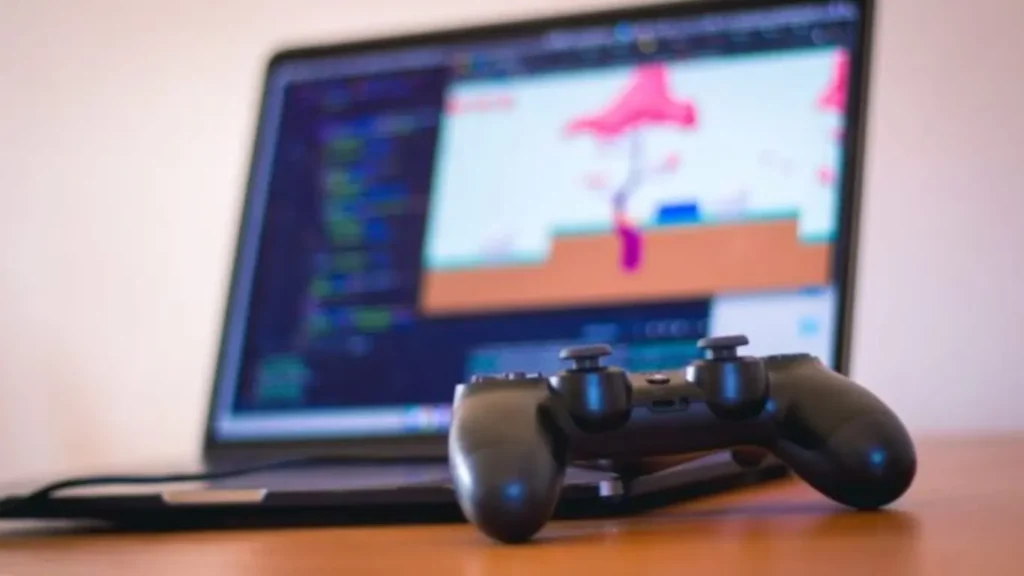In Godot, an open-source game engine, developers often seek ways to enhance their user interface (UI) to create visually appealing and interactive games. One essential task in game development involves adjusting the UI system to provide more dynamic and engaging user experiences.
In this guide, we will cover how to hard edit the binding for UI_Left in Godot, a task that might seem daunting at first but is crucial for mastering game development and recreation development.
Understanding Binding in Godot
Binding is a critical concept in game development, especially when working with user interfaces. It refers to connecting UI elements such as buttons, sliders, and labels to certain properties or variables. This connection ensures that any change in the property directly affects the UI element, making the interface dynamic and responsive.
Whether you’re using the GUI editor or code-based methods, binding allows you to create functional user interfaces that respond to user input.
In Godot, bindings can be managed using the UI system where each UI element is connected to a specific property. For instance, binding a button’s pressed property to a function allows the button to trigger certain actions when clicked. As you begin to explore Godot’s capabilities, binding will become one of the most essential tools at your disposal.
Types of Bindings (Soft and Hard)
When working with bindings in Godot, it’s important to understand the difference between soft and hard bindings. Soft bindings are typically used for weak references, where changes are less persistent and can be easily modified or nullified.
On the other hand, hard edits are more permanent, offering a stronger reference that persists even if the object is modified. These bindings are essential when you want to connect properties that should remain intact even after dynamic changes in the game’s environment.
Understanding these differences will help you make the best decision on when to use each binding type. For example, if you’re working on something like the UI_Left binding, you may want to choose a hard edit to ensure the binding remains consistent across various input devices like keyboards or gamepads.
Advantages of Godot How to Hard Edit the Binding for UI_Left
The hard edit method for binding in Godot has several advantages, especially for game development. By using this approach, you can make the UI system more reliable and responsive.
When you bind the UI_Left action (typically associated with the left arrow key or joystick input) to a specific function, you are ensuring that the UI remains visually appealing and functional throughout the game’s life cycle.
One of the major advantages of using hard binding is that it offers a stable connection between input actions and game events. This is particularly important in indie game development, where precise control over game mechanics is crucial for success.
Without hard editing, you might encounter conflicts or inconsistencies that could impact the overall experience. So, mastering the binding process, especially for commonly used actions like UI_Left, is a step towards achieving a seamless gameplay experience.
Step-by-Step Guide to Hard Edit the Binding for UI_Left
If you are a beginner looking to hard edit the binding for UI_Left, don’t worry. The process is easier than it sounds. Follow this simple, step-by-step guide, and you will be able to customize the bindings in no time.
Step 1: Set Up Your Project in Godot
First, ensure that your project is properly configured. This includes defining the project settings like input devices, resolution, and input actions. Go to Project Settings, and under the Input Map tab, you’ll see the list of default actions. You need to check that ui_left is listed as one of the actions. If it’s not, you can add it manually.
Step 2: Access the UI_Left Node in the Scene Tree
The next step involves accessing the UI_Left node in your scene hierarchy. To do this, open the scene tree, locate the UI_Left node, and ensure that it’s connected to your intended action.
This is the part where hard edits are crucial – instead of relying on soft bindings that may get overwritten, hard editing will ensure that the UI_Left remains consistent across all devices and input methods.
Step 3: Use the Inspector Panel to Edit the Binding
Now that you have the UI_Left node in your scene, go to the Inspector Panel. Look for the Signals tab and search for the UI_Left action in the search bar. This is where you can bind the UI_Left property to a function or method.
To hard edit the binding, select the Add button, and choose the function or method you want to trigger when the UI_Left action is executed. You can also manually add more complex bindings using GDScript if you need to make the connection more dynamic.
Step 4: Customize the Input Action
After linking the UI_Left to the desired function, you can proceed to customize how it behaves. For instance, you can set the action to trigger a specific event when a user presses the left arrow key or a joystick axis.
You can also use GDScript to hard edit the binding further, allowing for more flexibility and runtime adjustments.
Step 5: Test and Save Your Changes
Once you’ve completed the hard edit, it’s time to test the new configuration. Play your game and check if the UI_Left binding responds correctly to the input. You can always go back to the Inspector Panel to adjust the binding if necessary.
Setting up the Project in Godot
Before diving into the UI_Left binding process, it’s essential to properly configure your project. In Godot, setting up your project involves adjusting several critical settings.
These include defining your resolution, configuring input devices, and setting the input actions for various keys like ui_left. Make sure your project is ready by defining your input map, which includes all the actions and controls used throughout your game.
Accessing the UI_Left Node
After setting up your project, you need to access the UI_Left node within your scene hierarchy. The UI_Left node represents an input action and is typically linked to the left arrow key or joystick axis. Once you’ve located this node, you can proceed with hard editing the binding to customize the UI system for your game’s specific needs.
Changing the Default Key Binding
In Godot, the key bindings are customizable to suit your game’s mechanics. Whether you’re using a keyboard, gamepad, or joystick, you can easily change the default input binding for UI_Left to match your preferred input method.
By doing so, you ensure that your gameplay remains intuitive and comfortable for players, regardless of their device preferences.
Overview of the Input Map in Godot
The Input Map in Godot plays a crucial role in managing and customizing input actions. It allows you to define various controls like the left arrow key, mouse buttons, or gamepad inputs and assign them to specific actions in your game.
In the context of UI_Left, you can modify this action within the Input Map to change the binding to a different key or control.
Why You Need to Customize Input Bindings
Customizing input bindings offers several advantages. It enhances the user experience by making the game more accessible and user-friendly. You can create customized key schemes for different devices, allowing players to choose the input configuration that best suits their playstyle.
Additionally, it allows for more flexibility, ensuring that players with disabilities can enjoy the game with personalized controls.
The Difference Between Hard and Soft Binding Edits
Understanding the difference between hard and soft bindings is crucial in Godot. While soft bindings are dynamic and flexible, hard bindings are more stable and reliable.
When you hard edit the binding for UI_Left, you ensure that the input action remains consistent across different platforms and devices. This is particularly important when working with UI systems that need to respond accurately to player input.
Step-by-Step Guide to Hard Edit “UI_Left” Binding – Using the Input Map!
In this section, we will walk you through the process of hard editing the UI_Left binding using the Input Map. This method allows you to change the binding directly from the project settings. Follow these simple steps to customize the UI_Left input action to your liking.
- Go to Project Settings and select the Input Map tab.
- Find the ui_left action or add it if it doesn’t exist.
- Assign a new key or button to this action.
- Save the changes and test the new binding in your game.
Advanced Method – Hard Editing “UI_Left” Using GDScript!
For more flexibility, you can use GDScript to hard edit the UI_Left binding at runtime. This method allows you to dynamically adjust the input bindings based on player preferences. You can add or remove actions, change keys, and even create complex input mappings that respond to multiple devices simultaneously.
Troubleshooting and Common Issues – Fix Your Bindings Easily!
While working with hard edits in Godot, you may encounter a few issues, such as conflicting inputs or unresponsive bindings. Fortunately, troubleshooting is straightforward.
Ensure that your input actions are correctly mapped and check for any mismatches between the expected keys and the actual inputs. You can also use the Inspector Panel to fine-tune the UI_Left binding.
Conclusion
In conclusion, learning how to hard edit the binding for UI_Left in Godot is an essential skill for developers who want to create dynamic, responsive, and user-friendly games.
By following the steps outlined in this guide, you will be able to customize input actions to suit your specific needs.
Whether you are working on indie game development or recreation development, understanding how to manage bindings will significantly improve your project’s user interface and overall gameplay experience.



